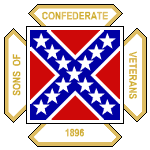Why was the color green considered bad luck?
#1

Posted 29 June 2008 - 22:59
The explanation sounds plausible enough as far as it goes, but I was wondering if any of you have other theories for the origin of the superstition.
Advertisement
#2

Posted 29 June 2008 - 23:52
However,my father always said green cars were unlucky{I heard it from other friends parents as well} and the only accident he ever had was in a green car,which my mother insisted he buy!
Ian
#3

Posted 30 June 2008 - 00:18
Also, I can't see how the colour green would have been a "potent racing taboo" as I struggle to find a single year in which no green car ran successfully in major US races. I'm sure some people even ate peanuts while sitting in one, freshly shaved!
#4

Posted 30 June 2008 - 01:57
No colour photos or images or descriptions that I can find quickly. The only colour that I can think of for that accident is by lowbrow artist Robt. Williams but I can't find the old Juxtapoz calender that has it.
Guess snopes.com gets it wrong according to Fines. If you can't trust snopes....
My understanding of the green superstition is that it came from Barney Oldfield and the Green Dragon. Think he had a wreck with it and put a curse on the car/colour (?). Dunno. I do remember going to a race track in Idaho with the late great Don Radbruch and when he saw the colour of shirt I was wearing he said "oh, green". I changed out of respect for his superstition.
#5

Posted 30 June 2008 - 05:50
Dan
#6

Posted 30 June 2008 - 06:18

#7

Posted 30 June 2008 - 06:53
P.S. Vanwall. Street cars don't count. The curse only works on racers.
#8

Posted 30 June 2008 - 07:06
#9

Posted 30 June 2008 - 07:40
#10

Posted 30 June 2008 - 08:06
I struggle a bit with this: Chevrolet drove a green car all season, and had lots of success with it (won Indy and, basically, the Championship), then he starts once on a non-green car and crashes fatally - how does that make green unlucky???Originally posted by TrackDog
The Monroe that Chevrolet won with at Indy was green, so the superstition must've started after that; otherwise, there wouldn't be any logical reaason for it to exist.
Also, don't look for "logical reasons", superstitions don't work like that. Take #13 for example, for some reason it's considered an unlucky number in Christian mythology, and that's why it was chosen to be unlucky in racing. It's not that someone made a survey and found out that most racing fatalities happened with #13, that's nonsense, otherwise the unlucky number would be #1, #8, #20 or some other - nobody would like that!
As for the colour green, you'll have to look for the socio-cultural background of colour mythology (colour code) in the USofA in the twenties (?) to find the reason for the superstition. Everything else is bollocks.
#11

Posted 30 June 2008 - 08:25
#12

Posted 30 June 2008 - 08:39
Maybe the Napier was painted green in the first place cos other colours had been allocated to other countries? Although those colours were somewhat malleable, I incline to the view that they were given on a year-by-year basis for the GB Cup. Maybe Napier even asked for "non-red" as it hadn't been lucky in '01. Not sure how or when Napier adopted green as their "house" colour.
#13

Posted 30 June 2008 - 08:47
Originally posted by mikeC
I seem to remember reading somewhere that the colour green was given to the British entry of an early race because green was a lucky colour - the car had been issued with race number 13, and this was done to compensate for that! Anyone got more info on this?
I have never done much research on those "national colours", but I believe they were first used at the 1903 Gordon-Bennett Cup race, which incidentally took place in Ireland. But your theories are shot because there were only twelve entries, numbered 1 to 12 of course. And I don't think #13 was shunned then already, that nonsense started later.Originally posted by fuzzi
I'm sure I read somewhere that back in the earlies an English driver had entered a race in Ireland and had drawn No.13. To offset the bad omen the Irish suggested he paint his car green to compensate. He did and it became the British national colour.
#14

Posted 30 June 2008 - 09:13
"The green susperstition had its start in West Coast oval track racing and goes back to the famous photo of Fred Friday - in a green midget - at Gilmore Stadium in the 1930's. In the picture the car is a ball of fire from the radiator shell back to a point well beyond the tail."
Perhaps the beginning.....................
Henry
#16

Posted 30 June 2008 - 14:24
PS--My cousin entered a green sprint car with the number 13 in a race at Indianapolis Motor Speeday. He was assigned a pit space that happened to be next to Sheldon Kinser (I believe that was the Kinser). When Kinser arrived at the Speedway and saw he was next to a green number 13, he demanded another pit assignment. A potent taboo indeed, whatever the exceptions one may be able to dredge up.
#17

Posted 30 June 2008 - 14:52
#18

Posted 30 June 2008 - 15:05
#19

Posted 30 June 2008 - 15:32
Advertisement
#20

Posted 30 June 2008 - 17:45
I wasn't aware that his Beverly Hills car was red. Interestingly, there were still green Frontenacs at Indy through at least 1922, including those entered by the 1920-winning entrant, which would further backup the argument that green being unlucky wasn't an issue at that time.Originally posted by fines
Chevrolet drove a green car all season, and had lots of success with it (won Indy and, basically, the Championship), then he starts once on a non-green car and crashes fatally - how does that make green unlucky???
#21

Posted 30 June 2008 - 17:58
#22

Posted 30 June 2008 - 18:09
"The green phenomenon usually is traced to a 1920 accident in Beverly Hills, Calif., that killed defending Indianapolis 500 champion Gaston Chevrolet, the youngest of the three industry-pioneering brothers. It was the first known racing accident in the United States to kill two drivers, and Chevrolet reportedly was driving a green car."
#23

Posted 30 June 2008 - 20:10
Thanks, Richard! Mmh, fourteen pages, need to take a bit of time for this - but HEY, there's an interesting link: "Marrying Mermaids - Critical Essay"!Originally posted by Vitesse2
The Folklore and Symbolism of Green seems to be the definitive work on the subject ....
Flat Black, Rob and anyone else interested: there is indeed a lot of confusion about the Chevrolet death car, some even claiming it to be his Indy winner, which it definitely was not. Part of the confusion is the fact that Gaston drove a Monroe at all of his 1920 appearances (as far as I can determine), but a Frontenac at Thanksgiving, and another part of the confusion is that the Monroes and Frontenacs were virtually identical.
I can't be 100 % sure of all the following, as detailed info is very difficult to find, but in essence the Monroes were green Frontenacs (which were usually red or maroon at the time), commissioned by the William Small Co. of Flint (MI) which had taken over the Monroe Motor Co. when that firm had run into financial problems a couple years earlier.
Before the year was out, the W. Small Co. was in trouble, too, and Monroe withdrew from racing. I believe the cars were even impounded by a creditor, at least that was the story the following May when Merv Headley tried to buy one of those cars (a purchase that fell through, further complicating an already very complicated issue). Anyway, Monroe was out of racing until a brief period in 1922, and then Small lost his battle to keep the company, and within a very short time two other parties moved in to own Monroe (including Premier of Indianapolis), and then came the end.
To get back to racing, I haven't found any evidence so far that any of the Monroe cars had been sold and run as a Frontenac, although Headley at the very least planned to. I suspect that the blue (?) #3/#12 Frontenac that was driven by Alton Soules and most probably owned by Joe Thomas was a former Monroe, but I can't be sure. Tracing cars in the early twenties can be very frustrating! Anyway, at least three of the original four team cars (including the Indy winner!) were still with the Small Co. in 1922!
As for Gaston Chevrolet, he appears to have driven at least three different Monroes in 1920, and the #6 Frontenac at Thanksgiving. That car had been red at Indy, and there are a number of colour paintings that show the car to be red at Beverly Hills, too - cf the cover of the mentioned Dick Wallen book Board Track, and the Jimmy Murphy book by TNFer Gary Doyle. However, so far I haven't found (nor searched for!) a period report mentioning the colour of the car.
#24

Posted 30 June 2008 - 20:39
#25

Posted 30 June 2008 - 21:02
#26

Posted 30 June 2008 - 21:25
#27

Posted 30 June 2008 - 21:46
#28

Posted 30 June 2008 - 22:11
I have now read the snopes.com article myself, and to be fair it doesn't suggest the above at all! To quote:Originally posted by Flat Black
The common racing superstition (in the U.S. anyway) that the color green is bad luck seems to be fading. But, of course, green was once a very potent racing taboo. A brief article on snopes.com suggests that the origins of this superstition stem from Gaston Chevrolet's Beverly Hills crash and an earlier accident in Syracuse that killed a large number of spectators.
And, with regard to the two accidents mentioned:In the world of the theater, actors and actresses are averse to the color, with some balking at its use on stage for either costuming or props. Away from the boards, we find the beliefs that national disaster invariably follows close on the heels of any issue of green-hued postage stamps, and that those who wear clothing of a verdant shade will soon afterwards have to don black (attend a funeral). And of all the possible colors a bride could choose for her wedding dress, green is considered one of the unluckiest.
This centuries-old disquiet about the color green has in modern times expanded and affixed itself to the automobile. Just as ill luck was supposed to attach to green clothing, a similar presumption of lurking calamity has come to fasten upon green vehicles, thereby dooming those who encase themselves in emerald glory (either by wearing it or riding about in it) to mischance.
Albeit, the article has the dates of the two races wrong: the Oldfield crash happened on Sep 16, and the Chevrolet crash on Nov 25.Well-entrenched centuries-old superstition about green being an ill-favored color has likely combined with memory of those two high-profile fatal crashes to help foster the belief that green cars and auto racing should not mix.
#29

Posted 01 July 2008 - 00:07
A. The car was the same at Indy as at Beverly Hills (a red Fronty) and GC did not, therefore, die in a green car.
B. The cars were not the same in which case he drove a red Fronty at Indy and presumably a green Monroe at Beverly Hills, which he died in.
Originally posted by fines
there is indeed a lot of confusion about the Chevrolet death car, some even claiming it to be his Indy winner, which it definitely was not.
As for Gaston Chevrolet, he appears to have driven at least three different Monroes in 1920, and the #6 Frontenac at Thanksgiving. That car had been red at Indy
PS--You're right about the Snopes article, but in post #16 I do acknowledge that "socio-cultural" factors likely contributed to the birth of the superstition.
#30

Posted 01 July 2008 - 02:38
The #6 Frontenac was indeed red at Indy. But Gaston was in a green Monroe, car #4.Originally posted by Flat Black
Here is the source of my confusion. In the first quote you state that Chevrolet's "death car" was not the car he drove at Indy. In the second, however, you use the evidence of Chevrolet's Fronty having been red at Indy as evidence that he died in a red vehicle. What gives?
A. The car was the same at Indy as at Beverly Hills (a red Fronty) and GC did not, therefore, die in a green car.
B. The cars were not the same in which case he drove a red Fronty at Indy and presumably a green Monroe at Beverly Hills, which he died in.
#31

Posted 01 July 2008 - 08:32
But he had already won a championship in the red, white and gold car before he was killed.Originally posted by Chris Skepis
The all time greatest racing driver made his career, fame and fortune driving a green car and soon after it was changed to red, white and gold, he has a fatal accident.
#32

Posted 01 July 2008 - 09:23
#33

Posted 01 July 2008 - 09:49
#34

Posted 01 July 2008 - 10:47
(I foolishly thought you might be referring to Jochen Rindt).
Sincere apologies.
#35

Posted 01 July 2008 - 11:28
#36

Posted 01 July 2008 - 14:42
Is that red Fronty #6 what Joe Boyer crashed at Indy? If so, I wonder if it was damaged beyond repair.
Capps' report from the LA Times is certainly interesting.
#37

Posted 01 July 2008 - 15:15
Either I'm explaining it badly, or you're not listening!;)Originally posted by Flat Black
Here is the source of my confusion. In the first quote you state that Chevrolet's "death car" was not the car he drove at Indy. In the second, however, you use the evidence of Chevrolet's Fronty having been red at Indy as evidence that he died in a red vehicle. What gives?
A. The car was the same at Indy as at Beverly Hills (a red Fronty) and GC did not, therefore, die in a green car.
B. The cars were not the same in which case he drove a red Fronty at Indy and presumably a green Monroe at Beverly Hills, which he died in.
I said Gaston drove a Monroe all year, and only once at Beverly Hills a Frontenac, which pretty much blows both your options. And yes, #6 Fronty was Joe Boyer's car at Indy, and no, it was not damaged beyond repair because it was driven by Joe's pal and riding mechanic Ernie Ansterberg only three weeks later at Uniontown.
Don, your find is certainly enlightening and quite surprising! But why "apparently", if I may ask?
#38

Posted 01 July 2008 - 16:19
#39

Posted 01 July 2008 - 16:24
Okay. I'm clear on what you're saying now.
And, incidentally, the NY Times confirms that GC was driving a Fronty at Beverly Hills.
http://query.nytimes...6CF&oref=slogin
Advertisement
#40

Posted 01 July 2008 - 16:34
#41

Posted 01 July 2008 - 17:07
Bob Anderson had no problems with green, but Mike Parkes did! As soon as he noticed that the pen was writing green he stopped and I had to change it to a red one...

#42

Posted 01 July 2008 - 19:16
Sadly, luck ran out for both of them...
#43

Posted 01 July 2008 - 19:32
#44

Posted 01 July 2008 - 22:53
I subscribe to the theory that an existing superstition in the US of A was 'confirmed' by a couple of high profile crashes and the rest is history ... (sorry Don)
#45

Posted 02 July 2008 - 00:46
There are thousands upon thousand of questions that need to be asked and an ever greater number of questions that need to be researched in this little backwater part of Clio's Realm. This topic is not one that would seem to be very high on the priority list.
Nice that we confirmed that Chevrolet's car -- whether it was a Monroe or a Frontenac -- was actually green and that O'Donnell's was gray. Such is the nature of things here at TNF that such a tidbit, a nugget should surface during such a discussion.
#46

Posted 02 July 2008 - 07:38
#47

Posted 02 July 2008 - 11:20
Originally posted by Flat Black
Today's drivers race non-green cars because that is what everybody else has always raced, not because they fear the consequences of driving a green car.
Maybe. Or maybe they drive in the colors the sponsors determine.
#48

Posted 02 July 2008 - 14:13
PS--Superstition is part of racing's cultural history. It's off TNF's beaten path to be sure, but I don't think it's intrinsically any less important than the vast majority of topics that appear on the forum.
#49

Posted 03 July 2008 - 17:07
It seems that the Speedway-owned Premier cars from hte mid-teens were painted green; and in 1916, there were 4 green cars that took the flag. Since there were only 21 starters, this is a high percentage of the starting field.
in 1921, the Monroe cars were still painted green after Gaston Chevrolet's death; Cornelius Van Raanst drove one in the race, and since he was chief engineer for Louis Chevrolet, there was obviously no superstition present on the part of the team. Monroe cars continued in green livery at least through 1922.
In 1925, Phil Shafer finished 3rd in a green car, and Earl Cooper drove green cars in '25 and '26'.
The factory Studebakers in the early '30's were painted green and white.
There were no green cars in the starting field from 1936-41.
Jimmy Jackson didn't adhere to the green car curse, because he drove a green car in '46 and '47, finishing 2nd in '46.
From 1948-1951, there were no green cars, but in 1952, a turquois car appeared.
From 1953-1955 the Chapman cars were turquois, and Tony Bettenhausen finished 2nd in 1955 in one of them.
The next notable green car to appear at the Speedway was the 1961 Cooper-Climax of Jack Brabham.
In 1963, Jim Clark drove the green Lotus for the first time, and won in 1965.
In 1968, the first Lindsey Hopkins Sprite Specials raced at the track; they were white and green, but green was a prominent part of the paint scheme.
Beginning in 1974, the Cobre Tire cars were turquois and copper; in later years, more turqouis than copper.
Johnny Rutherford drove the Gatorade McLaren in 1975, there was a lot of talk about a contender driving a green car.
In 1981, Josele Garza drove a green, red and white car to commemorate his native Mexico. He didn't win, but led several laps and was named Rookie Of The Year.
In 1983, the first Skoal Bandit made it's debut, with Teo Fabi at the wheel, another Rookie-Of The Year.
In 1988, the Skoal cars were joined by the Quaker State cars.
In 1995 and 1996, there were 5 green cars in the race.
I admit that my research is incomplete, but I do see a trend or two. Not every driver of note aspired to the notion that green cars were unlucky when the superstition was most popular, which seems to be from the mid 1930's to the early '60's. The Speedway itself sponsored green cars with it's Premiers in the mid-to-late 'teens. Sponsor dollars seem to have soothed any tensions that drivers may harbor today regarding car color. And, during that time period, green cars won the race twice, and sported several other well-placed finishes.
Alltogether, I counted 115 green cars that took the green flag from 1911 to 1998, or a little over one-per-year on average. It's interesting to note that even though green cars were considered so unlucky, that not many of them were involved in serious crashes at the Speedway.
I think that the "green is unlucky" notion or superstition added to the color [okay, it's a bad pun] of racing in the days when it was considered to be so dangerous. There's no question that such a notion added to the mystique that followed the sport in the romantic days of yore.
What I don't understand is the idea that peanuts in the shell were bad luck...where did that originate? I think that Wilbur Shaw was the originator of the idea that shaving on race day was a bad omen, but I'm not sure.
Dan
#50

Posted 03 July 2008 - 18:42
It comes off to me like "repeat something enough and it becomes a fact"
Maybe many drivers weren't that superstitious, but this folklore kept getting circulated, and it became widespread.
Perhaps the mainstream media picked up on it and ran with it. Certainly wouldn't be the first or last time that happened with racing mythology.
Obviously, it doesn't appear the Chevrolet incident affected too many.
Whille some obviously embraced superstition, I feel it's another case where it's more folklore than lore.


























